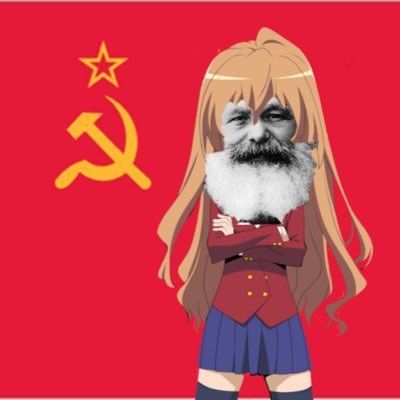I think i understand the basics. For example, a capitalist buys wood for 20 (money) to make a chair, he employs someone else to make the chair which adds value to the wood...lets just say the value added through the labour is 20 (money) the chairs cost therefore is 40 (money) but the capitalist steas some of the added value to make a profit and now the chair is only worth 30 (money). The worker has therefore worked a significant amount of time for free because the value added does not correspond to what the chair is sold for. Thats already what i understand but how exactly does the capitalist turn this into profit? Yes he has gained some money but he still has 30 dollars in debt due to the production costs and the labours costs...and it would not change in the future as the debt just like the value he steals from the workers grows. Can someone pls explian?
You don't need to add debt, or even money into the equation to complicate it. Lets use labor time (in hours) as our unit of account.
LH = composite labor hours (the labor hours required to harvest / produce the intermediate thing)Input Labor Hours Wood for chair, IE materials 1 LH Per chair cost of building factory, maintenance, other costs, etc 1 LH Time to produce the chair (turn wood into chair), IE Wages 1 LH Capitalist sells the chair / Selling price 5 LH Surplus value = 5 LH - 3 LH = 2 LHSo the capitalist gains
2 LHfor doing nothing.Maintenance, startup costs, materials, can all be accounted for in the selling price. The point is that :
- Workers do not receive the full selling price (after accounting for other costs), and
- Workers do not control the surplus, IE its capitalist-controlled surplus value. This is the theft / profit part.
The employee actually puts in 3 LH to build the chair but is only paid by the Capitalist for 1 of them leaving a 2 LH profit for the Capitalist. The sale price of the commodity when supply matches demand is the real value of the commodity.
The "trick" the Capitalist does is to negotiate a wage smaller per unit of time than the value a worker can produce in that time, but it must be at least equal to the cost of reproducing the worker.
This is the point Marx makes when he's making the distinction between labour and labour-power.
The worker sells his labour-power - his ability to work for a certain period of time - to the capitalist for a wage. That wage is determined by the value of the necessities needed to reproduce the labour-power of the worker (food, rent, etc.) - and it can also fulctuate due to supply and demand.
Labour-power is a special commodity because it creates additional value while it's used up (while a person is working). The additional (surplus) value created is greater than the value necessary for the reproduction of the used up labour-power, and the capitalist owns the produced surplus value.
Engels explains this distinction, and the reasons why it's necessary in the introduction to Marx's Wage Labour and Capital.
Unsolicited trivia: there’s a symbol for generic/unspecified currency: ¤
ohhh ok, thank you, but that would imply that the capitalist needs to buy the resources needed as cheaply as possible to have the maximum profit...which does make sense. The ingredients companies buy are often very cheap and low in quality and yet they sell it for disproportionate amounts of money even when considering the wage that the workers needs to be paid
Quality of materials only matters when taken broadly in the economy. When Capitalists find cheaper materials, they can sell the commodity for more than it's worth for a short time before others find cheaper sources and undercut the price. Eventually the prices will balance and so will the sourcing of materials.
However, materials are also commodities, and their price is tied to the price of labor. What Capitalists can do in the real world is find a place or a people where labor is cheaper. They can pay nationally oppressed workers cheaper (i.e. Black American pay gap) and lower their cost of living which translates to wage. They can pay workers from another country much cheaper wages as their cost of living is lower from underdevelopment, i.e. Imperialism. They can even import workers but maintain a state machine that allows imported workers to be paid less than the national standard (i.e. undocumented and slave work).
Constant Capital 20 money for machines/tools and raw materials + Variable Capital 10 money for the Worker. That 10 money is enough to feed, etc him/his family for one day. The Price of Work is not the same as how much Value he adds. The Worker adds more value than 10 money in a Day, lets say he can produce 20 money value per Day. So he could just work half a day and feed his family. But the Capitalist needs to make a profit so he lets the Worker work for the entire Day, but only pays him 10 money. So the Capitalist invests 20 + 10 money and get 40 money out by selling the Commodity.
It boils down to:
Profit = Sell price - Labour cost - Raw resources cost (which in turn also have labour cost involved...) - other production cost (electricity, water, etc).
To answer your question, the sell price of a commodity has to cover the costs required to produce it. e.g. a coat sold at $30 means it costed < $30 to produce in order to turn a profit.
Another important point is that commodities have to be sold/exchanged to turn profit, they do not inherently produce a profit. Big part of why marketing is really important nowadays, many commodities produced are completely useless i.e. they do not have any use-value, so in order to sell them they have to manufacture some use-value e.g. the "status symbol" from watches.
so wait, lets view it form a different perspective: Tools costs, Resource/ Material costs and the Wage the Capitalist has to pay the worker so he can survive to work further are all Costs which the Capitalist bails out by surplus-value by letting the same workers work for more than the wage they are paid indicates....until the value extracted by the capitalists is enough to pay back the production costs and to keep a rest of profit fort themselves.
Is that right?
There is more to this, but yes the fundamental point of surplus-value comes from workers getting paid less that what they produce. The growth of capitalism, and any other economic system hitherto, comes from the exploitation of the working class.
"Primitive accumulation" is another concept that builds up on this, and explains where does the initial capital come from, i.e. how does the capitalist came to own the means of production.







